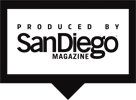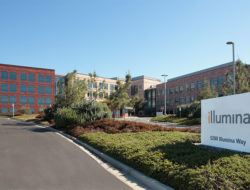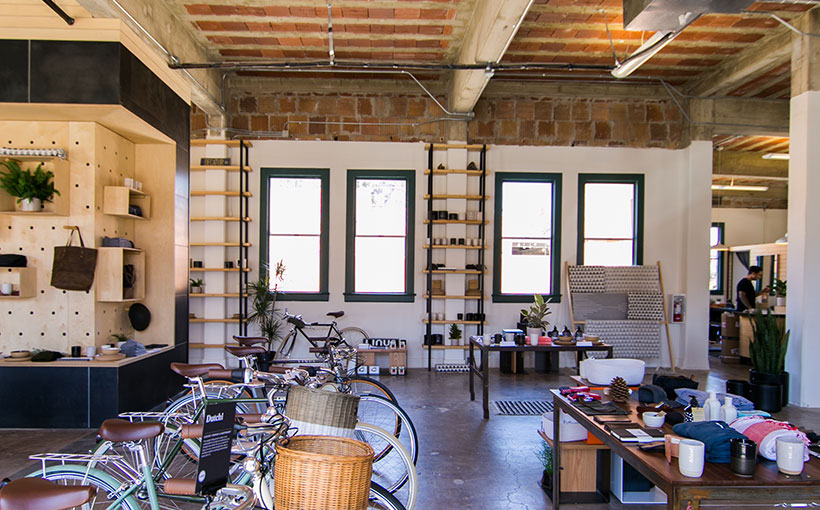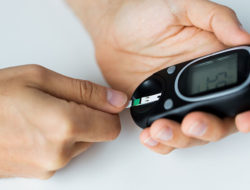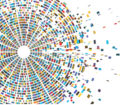With startup news slowing down over the holidays, I took an opportunity to get an update on one of the most creative businesses in San Diego—Moniker Group.

Ryan Sisson
I sat down with Moniker founder Ryan Sisson, a leader in our region’s creative community to talk innovation, creatives, and where Moniker goes from here.
To give you some background, Moniker Group is a parent company to 8 businesses and 10 brands. Moniker General is the brick and mortar businesses, including Moniker Coffee and Moniker Home. The more creative side includes Moniker Design (commercial interior design and custom fabrication) and Moniker Made (furniture). Then add on the real estate businesses—a newer endeavor for the company, including commercial development and Moniker Commons, a new co-working community opening in early 2017. Lastly there is the events side of the business that includes Moniker Events (venue management and onsite coordination) as well as Luna Wild (event design).
The company has grown to 30 staff this year and expects to be closer to 50 next year. You would think with all of these varying businesses it would be hard to do any one thing well. However, the business model was designed to ensure the success of each of the businesses by overlaying the parent company resources. Sisson considers himself “the bulldozer driver” clearing a path so each of the team members can do what they do well.
Before opening Moniker General in Liberty Station earlier this year, the company was headquartered on the East side of downtown in the Snowflake Bakery building. This location still houses creative small businesses. The downtown location turned into more of a community and that has been the goal as Moniker builds out new spaces.
“That’s why the retail space has coffee. It has a place to gather,” Sisson said of Moniker General, a spacious coffee shop and home goods store with an outdoor patio space that houses a long dining type table that can seat 30-40 people.
When Moniker Commons opens in February, just a short walk from Moniker General in Liberty Station, the philosophy will be the same. Sisson doesn’t like to call it a co-working space. He believes the number one reason people join a co-working space is community. “Anything that Moniker does is community/people focused. How do we bring people together? Anything that we create from a physical space environment should have a sense of community.”
Moniker Commons is 8,500 square feet and includes hot desk space as well as offices. One unique characteristic is the size of some of the offices available. While most co-working spaces have 2-6 person offices, Moniker will offer a few larger spaces for businesses with more employees.
While the recent growth from Moniker has been in Liberty Station, Sisson hinted at some other areas of town that might be ripe for some creative development. In our discussion about downtown and the urban core, he asserted that there are some areas just outside downtown that could be interesting places for growth such as Southeast San Diego, Logan Heights, the Sports Arena area, and the Marina district.
I ran into Sisson in November at an event featuring urbanist Richard Florida, who spoke about San Diego’s creative class and innovation community. Since then I have been making a list of questions I wanted Sisson to weigh in on about Florida’s talk. Read his answers below.
HATCH: Richard Florida talked about great innovation communities being an engineering culture and a design culture. He said San Diego has historically been an engineering culture. Do you agree and what do you think about this observation?
Ryan Sisson: Contextualizing it was super helpful. It brought clarity to our mission. It didn’t change anything. It just reinforced the narrative. It’s not that San Diego doesn’t have good designers or good creatives, but they always felt like they had to go somewhere else to do what they do. It is so much harder to create a good engineering culture than a good design culture. Engineering has a harder barrier to entry. I am seeing momentum in the level of creativity happening in our city and the culture coming up here. We know from Creative Mornings that the people are here.
Moniker was featured in the Wall Street Journal’s guide to San Diego. How impactful do you believe that story was in attracting creative talent to San Diego?
Up to now, the story hasn’t been told properly—now that we have the skill set, we don’t have to fake it. The unexpected stories, like the one in the Journal, are what will change people’s views of San Diego. I am passionate about not losing so many creative, talented friends to LA, Austin, Brooklyn.
I was intrigued by Florida’s assertion that creatives don’t always want to live downtown, many of them want to live in the suburbs. Walkable suburbs. Have you seen evidence of this?
I know so few people who live downtown. They have families and want yards and have stuff to store in a garage. I have friends buying houses in La Mesa where it is walkable and they have great new restaurants.
When Florida talked about the innovation gap and how it is largely along racial and geographic lines, I wondered what the takeaways were for San Diego. How do we address the innovation gap here?
I think it’s more than programs. Imagine someone coming into your neighborhood who didn’t live here saying, “Hey, we have some programs that will help you spend more time with each other,” versus just living there and spending time with neighbors. Less programs and more presence. Community requires more than a non-profit program.
My vision for Moniker is a tool belt. I have a vision to help others build their vision. Open hands and a set of skills. What can we help you build? Let’s do this together. You don’t have to try hard to make it something. Invest in the urban core and embrace what is happening around you.
Let’s lighten it up a bit here. What are your favorite spaces?
The next one.
Ok. How about non-Moniker spaces?
I like the Underground Elephant space. Also the new Craft & Commerce space.
Who are the creative innovators and visionaries we should be watching?
Nate Spees, founder of Creative Mornings and CEO of Grizzly. There are some younger real estate guys popping up with the vision to create something different. We are a part of that, but are still trying to break through that ceiling. We will see that impact in the next 3-5 years.
Arsalun Tafazoli at Consortium Holdings (Craft & Commerce, Ironside, Soda & Swine). Sam Larson who owns the Lone Flag boutique in Del Mar and a creative agency called Other Sons. His wife started the Rylee & Cru children’s clothing line. Paul Basile— every restaurant he does is super inspiring.
There are some great companies growing right now: Mirum, Red Door, Mindgruve, Fifty and Fifty, Basic, and Vitro.
Tags: Blogs, Startup Buzz
